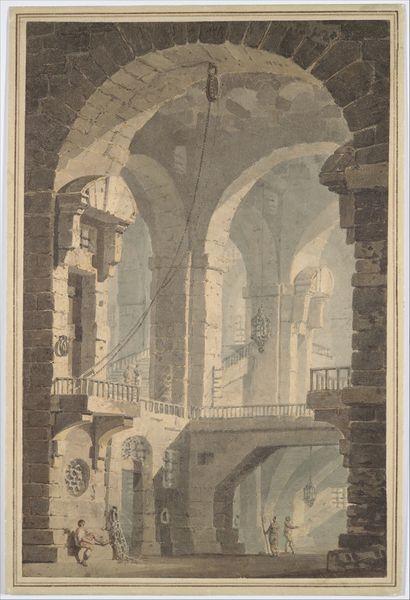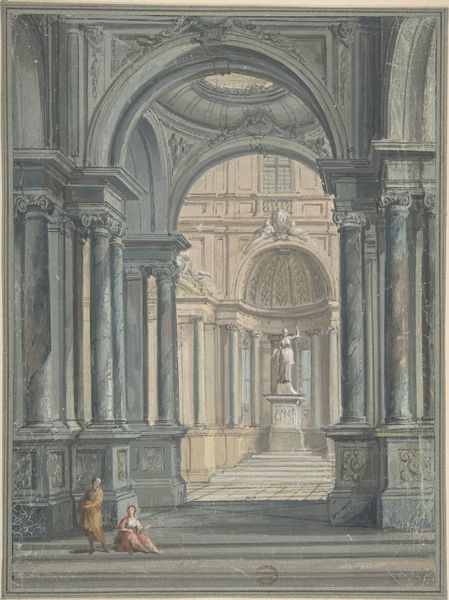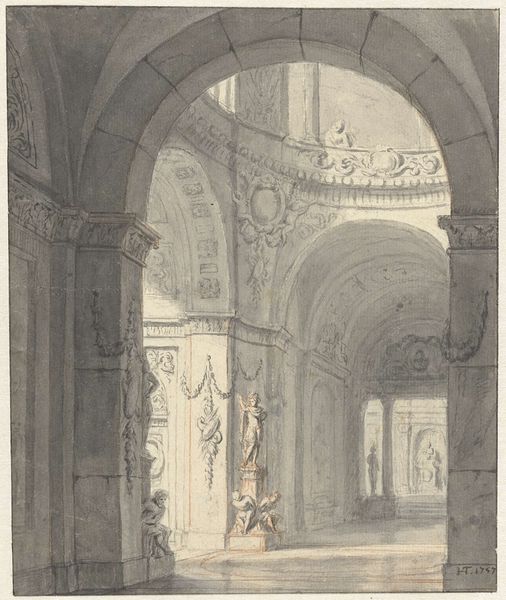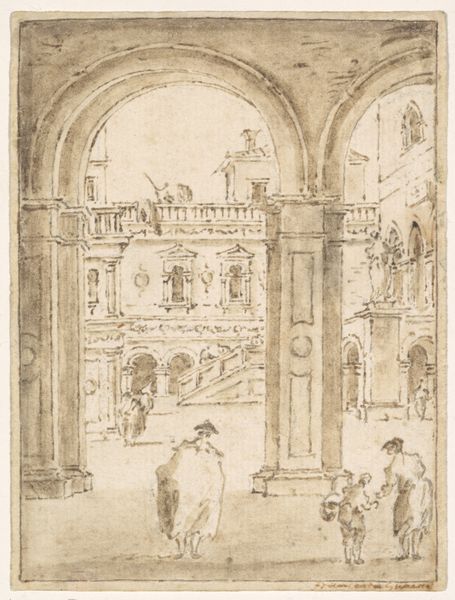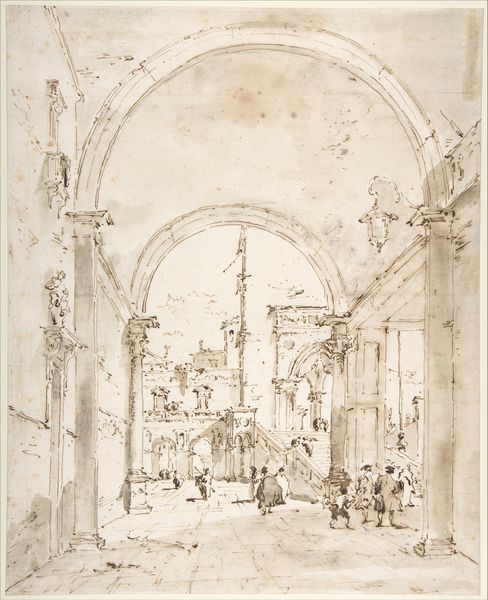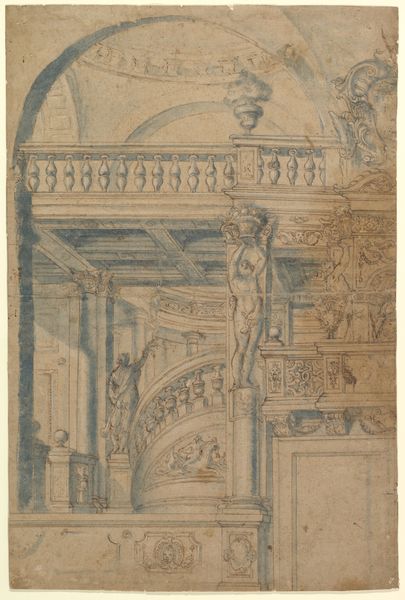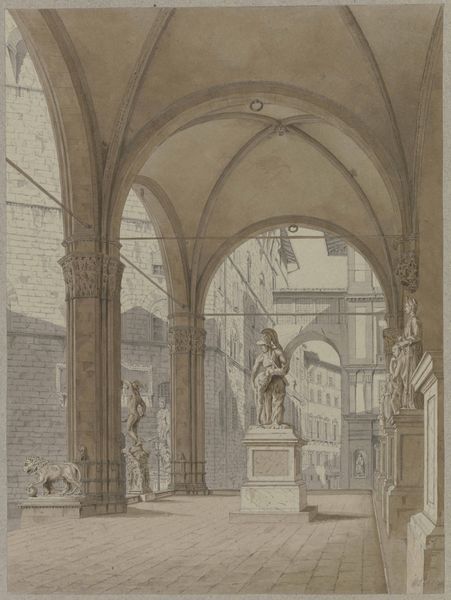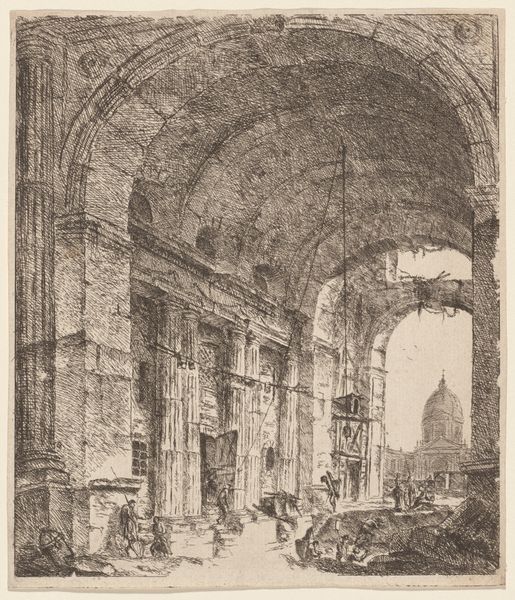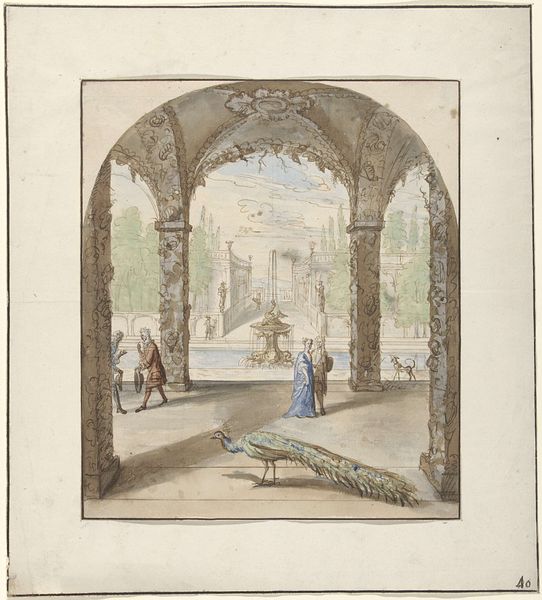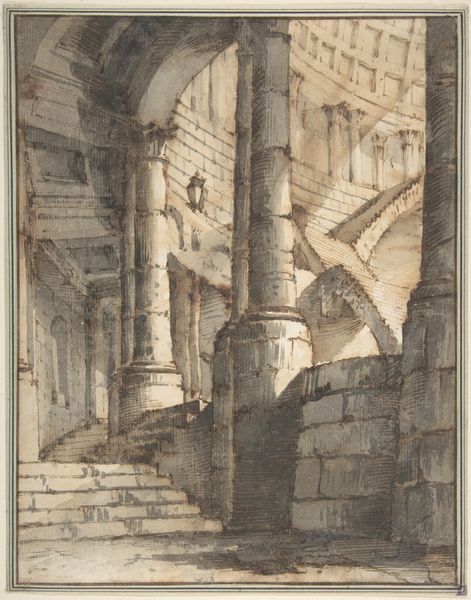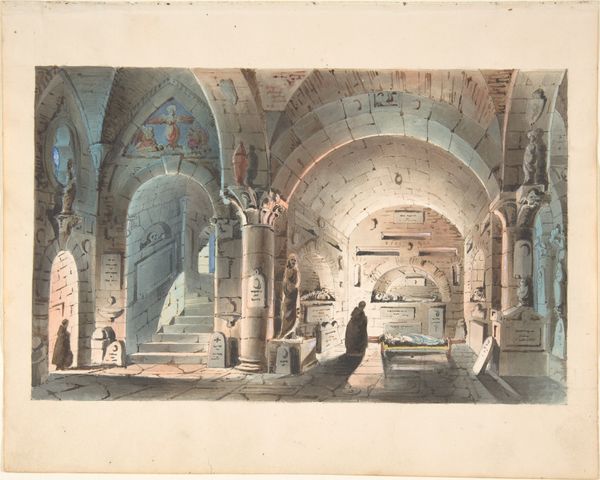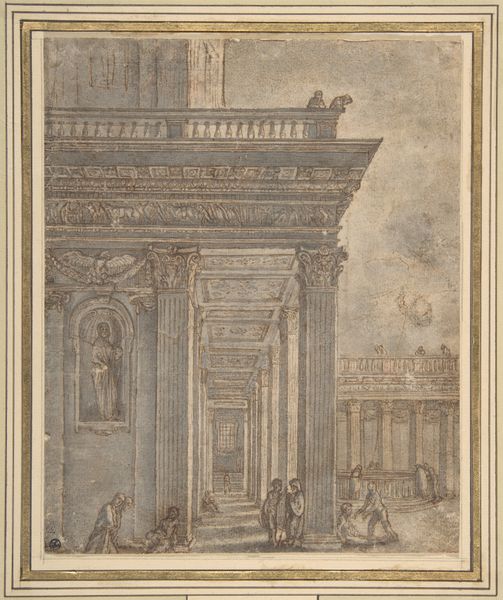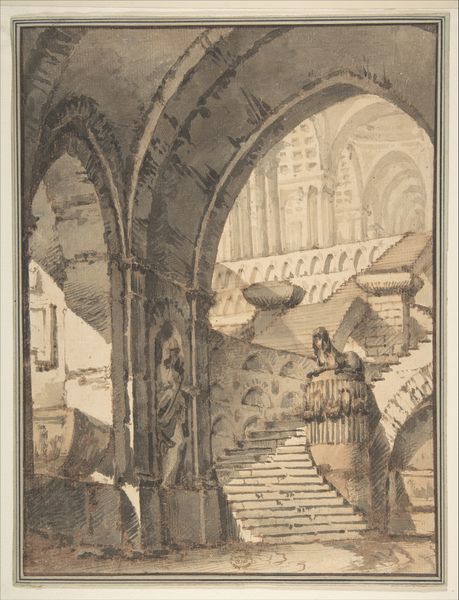
drawing, plein-air, watercolor, architecture
#
architectural sketch
#
drawing
#
aged paper
#
toned paper
#
light earthy tone
#
plein-air
#
incomplete sketchy
#
landscape
#
watercolor
#
coloured pencil
#
underpainting
#
watercolour bleed
#
watercolour illustration
#
watercolor
#
architecture
Dimensions: overall: 26.5 x 19.9 cm (10 7/16 x 7 13/16 in.)
Copyright: National Gallery of Art: CC0 1.0
Editor: We're looking at Hubert Robert's "Courtyard of the Villa Pliniana", a watercolor drawing. The tones are muted, and the scene feels both grand and a little melancholic. What do you see in this piece, considering its context? Curator: Beyond the picturesque composition, I see a powerful representation of the intersection between nature, power, and privilege in 18th-century Europe. How does this manicured "nature" become an aesthetic backdrop for a privileged class, even today? Think about how the construction of such spaces often comes at the expense of local communities and ecological balance. Editor: So you're saying the beauty of the drawing might mask a more complex history? Curator: Exactly. The villa becomes a stage for social display. Consider who gets to enjoy these spaces, and whose labor made them possible. Also, Robert’s loose brushstrokes capture the transient nature of the scene. But the historical context invites us to interrogate the very concept of idyllic retreats. Do you notice how the architectural forms mimic natural forms, blurring the line between what is 'natural' and what is constructed? Editor: Yes, the arches mirror the landscape! So, Robert is showing us not just a place, but a way of seeing the world, colored by power? Curator: Precisely. And his technique subtly acknowledges this constructed nature. By leaving visible brushstrokes, by using earthy tones, is he offering a critique or simply observing? The beauty is undeniable, but our awareness must go beyond a simple aesthetic appreciation. Editor: I hadn't thought of it that way. I see now that understanding the power dynamics at play really deepens our appreciation and complicates our response to the image. Curator: Absolutely, art history is never neutral, just like artistic representations of spaces that affect all people. Considering the social and political dimensions invites us to question the world around us and make connections between historical representation and current events.
Comments
No comments
Be the first to comment and join the conversation on the ultimate creative platform.
